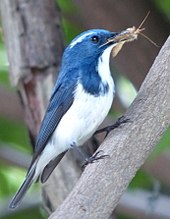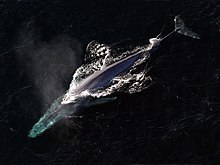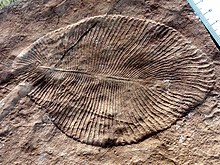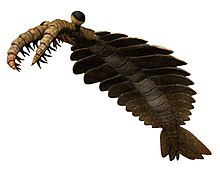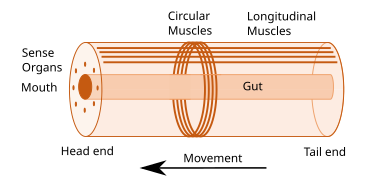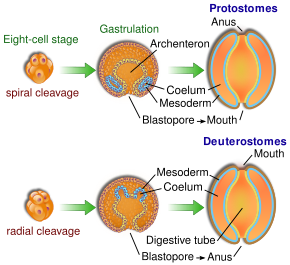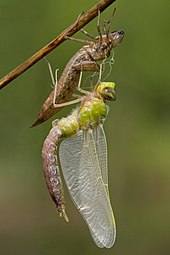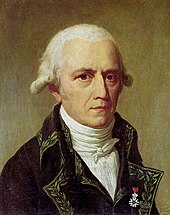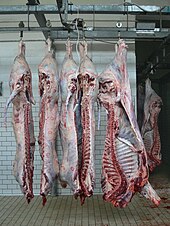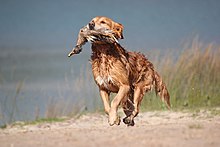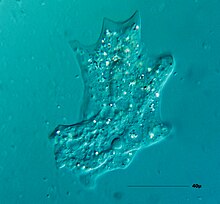Animal
Definition
Animals are multicellular eukaryotic organisms that form the biological kingdom Animalia. With few exceptions, animals consume organic material, breathe oxygen, are able to move, reproduce sexually, and grow from a hollow sphere of cells, the blastula, during embryonic development. Over 1.5 million living animal species have been described—of which around 1 million are insects—but it has been estimated there are over 7 million animal species in total. Animals range in length from 8.5 millionths of a metre to 33.6 metres (110 ft) and have complex interactions with each other and their environments, forming intricate food webs. The study of animals is called zoology.
Most living animal species are in the Bilateria, a clade whose members have a bilaterally symmetricbody plan. The Bilateria include the protostomes—in which many groups of invertebrates are found, such as nematodes, arthropods, and molluscs—and the deuterostomes, containing the echinodermsand chordates (including the vertebrates). Life forms interpreted as early animals were present in the Ediacaran biota of the late Precambrian. Many modern animal phyla became clearly established in the fossil record as marine species during the Cambrian explosion which began around 542 million years ago. 6,331 groups of genes common to all living animals have been identified; these may have arisen from a single common ancestor that lived 650 million years ago.

Humans make use of many other animal species for food, including meat, milk, and eggs; for materials, such as leather and wool; as pets; and as working animals for power and transport. Dogs have been used in hunting, while many terrestrial and aquatic animals are hunted for sport. Non human animals have appeared in art from the earliest times and are featured in mythology and religion.
Etymology
The word "animal" comes from the Latin animalis, meaning having breath, having soul or living being. The biological definition includes all members of the kingdom Animalia. In colloquial usage, as a consequence of anthropocentrism, the term animal is sometimes used nonscientifically to refer only to non-human animals.
Characteristics
Animals have several characteristics that set them apart from other living things. Animals are eukaryotic and multicellular, unlike bacteria, which are prokaryotic, and unlike protists, which are eukaryotic but unicellular. Unlike plants and algae, which produce their own nutrients animals are heterotrophic, feeding on organic material and digesting it internally. With very few exceptions, animals breathe oxygen and respire aerobically. All animals are motile (able to spontaneously move their bodies) during at least part of their life cycle, but some animals, such as sponges, corals, mussels, and barnacles, later become sessile. The blastula is a stage in embryonic development that is unique to most animals, allowing cells to be differentiated into specialised tissues and organs.
Structure
All animals are composed of cells, surrounded by a characteristic extracellular matrix composed of collagen and elastic glycoproteins. During development, the animal extracellular matrix forms a relatively flexible framework upon which cells can move about and be reorganised, making the formation of complex structures possible. This may be calcified, forming structures such as shells, bones, and spicules. In contrast, the cells of other multicellular organisms (primarily algae, plants, and fungi) are held in place by cell walls, and so develop by progressive growth. Animal cells uniquely possess the cell junctions called tight junctions, gap junctions, and desmosomes.
With few exceptions—in particular, the sponges and placozoans—animal bodies are differentiated into tissues. These include muscles, which enable locomotion, and nerve tissues, which transmit signals and coordinate the body. Typically, there is also an internal digestive chamber with either one opening (as in flatworms) or two openings (as in deuterostomes).
Reproduction and development
Nearly all animals make use of some form of sexual reproduction. They produce haploid gametesby meiosis; the smaller, motile gametes are spermatozoa and the larger, non-motile gametes are ova. These fuse to form zygotes, which develop via mitosis into a hollow sphere, called a blastula. In sponges, blastula larvae swim to a new location, attach to the seabed, and develop into a new sponge. In most other groups, the blastula undergoes more complicated rearrangement. It first invaginates to form a gastrula with a digestive chamber and two separate germ layers, an external ectoderm and an internal endoderm. In most cases, a third germ layer, the mesoderm, also develops between them. These germ layers then differentiate to form tissues and organs.
Repeated instances of mating with a close relative during sexual reproduction generally leads to inbreeding depression within a population due to the increased prevalence of harmful recessivetraits. Animals have evolved numerous mechanisms for avoiding close inbreeding. In some species, such as the splendid fairywren (Malurus splendens), females benefit by mating with multiple males, thus producing more offspring of higher genetic quality.
Some animals are capable of asexual reproduction, which often results in a genetic clone of the parent. This may take place through fragmentation; budding, such as in Hydra and other cnidarians; or parthenogenesis, where fertile eggs are produced without mating, such as in aphids.
Ecology
Animals are categorised into ecological groups depending on how they obtain or consume organic material, including carnivores, herbivores, omnivores, detritivores, and parasites. Interactions between animals form complex food webs. In carnivorous or omnivorous species, predation is a consumer-resource interaction where a predator feeds on another organism (called its prey). Selective pressures imposed on one another lead to an evolutionary arms race between predator and prey, resulting in various anti-predator adaptations. Almost all multicellular predators are animals. Some consumers use multiple methods; for example, in parasitoid wasps, the larvae feed on the hosts' living tissues, killing them in the process, but the adults primarily consume nectar from flowers. Other animals may have very specific feeding behaviours, such as hawksbill sea turtles that primarily eat sponges.
Most animals rely on the energy produced by plants through photosynthesis. Herbivores eat plant material directly, while carnivores, and other animals on higher trophic levels, typically acquire energy (in the form of reduced carbon) by eating other animals. The carbohydrates, lipids, proteins, and other biomolecules are broken down to allow the animal to grow and to sustain biological processes such as locomotion. Animals living close to hydrothermal vents and cold seeps on the dark sea floor do not depend on the energy of sunlight. Rather, archaea and bacteria in these locations produce organic matter through chemosynthesis (by oxidizing inorganic compounds, such as methane) and form the base of the local food web.
Animals originally evolved in the sea. Lineages of arthropods colonised land around the same time as land plants, probably between 510–471 million years ago during the Late Cambrian or Early Ordovician. Vertebratessuch as the lobe-finned fish Tiktaalik started to move on to land in the late Devonian, about 375 million years ago.Animals occupy virtually all of earth's habitats and microhabitats, including salt water, hydrothermal vents, fresh water, hot springs, swamps, forests, pastures, deserts, air, and the interiors of animals, plants, fungi and rocks. Animals are however not particularly heat tolerant; very few of them can survive at constant temperatures above 50 °C (122 °F). Only very few species of animals (mostly nematodes) inhabit the most extreme cold deserts of continental Antarctica.
Diversity
Largest and smallest
The blue whale (Balaenoptera musculus) is the largest animal that has ever lived, weighing up to 190 metric tonnes and measuring up to 33.6 metres (110 ft) long. The largest extant terrestrial animal is the African bush elephant(Loxodonta africana), weighing up to 12.25 tonnes and measuring up to 10.67 metres (35.0 ft) long. The largest terrestrial animals that ever lived were titanosaur sauropod dinosaurs such as Argentinosaurus, which may have weighed as much as 73 tonnes. Several animals are microscopic; some Myxozoa (obligate parasites within the Cnidaria) never grow larger than 20 µm, and one of the smallest species (Myxobolus shekel) is no more than 8.5 µm when fully grown.
Numbers and habitats
The following table lists estimated numbers of described extant species for the animal groups with the largest numbers of species, along with their principal habitats (terrestrial, fresh water, and marine), and free-living or parasitic ways of life. Species estimates shown here are based on numbers described scientifically; much larger estimates have been calculated based on various means of prediction, and these can vary wildly. For instance, around 25,000–27,000 species of nematodes have been described, while published estimates of the total number of nematode species include 10,000–20,000; 500,000; 10 million; and 100 million. Using patterns within the taxonomic hierarchy, the total number of animal species—including those not yet described—was calculated to be about 7.77 million in 2011.
Evolutionary origin
The first fossils that might represent animals appear in the 665-million-year-old rocks of the Trezona Formation of South Australia. These fossils are interpreted as being early sponges.
The next oldest fossils that could be animals are found in the Ediacaran biota, towards the end of the Precambrian, around 610 million years ago. These are difficult to relate to later fossils. Some may represent precursors of modern phyla, but they may be separate groups, and it is possible they are not animals at all.
Many animal phyla first appear in the fossil record during the Cambrian explosion, starting about 542 million years ago, in beds such as the Burgess shale. Extant phyla in these rocks include molluscs, brachiopods, onychophorans, tardigrades, arthropods, echinoderms and hemichordates, along with numerous now-extinct forms. The apparent suddenness of the event may however be an artefact of the fossil record, rather than showing that all these animals appeared simultaneously.
Some palaeontologists have suggested that animals appeared much earlier than the Cambrian explosion, possibly as early as 1 billion years ago. Trace fossils such as tracks and burrows found in the Tonian period may indicate the presence of triploblastic worm-like animals, roughly as large (about 5 mm wide) and complex as earthworms. However, similar tracks are produced today by the giant single-celled protist Gromia sphaerica, so the Tonian trace fossils may not indicate early animal evolution. Around the same time, another line of evidence may indicate the appearance of grazing animals: the layered mats of microorganisms called stromatolitesdecreased in diversity, perhaps due to grazing.
Phylogeny
Animals are monophyletic, meaning they are derived from a common ancestor and form a single clade within the Apoikozoa. The Choanoflagellata are their sister clade. The most basal animals, the Porifera, Ctenophora, Cnidaria, and Placozoa, have body plans that lack bilateral symmetry, but their relationships are still disputed. As of 2017, the Porifera are considered the basalmost animals. An alternative to the Porifera could be the Ctenophora,which like the Porifera lack hox genes, important in body plan development. These genes are found in the Placozoa and the higher animals, the Bilateria. 6,331 groups of genes common to all living animals have been identified; these may have arisen from a single common ancestor that lived 650 million years ago in the Precambrian. 25 of these are novel core gene groups, found only in animals; of those, 8 are for essential components of the Wnt and TGF-betasignalling pathways which may have enabled animals to become multicellular by providing a pattern for the body's system of axes (in three dimensions), and another 7 are for transcription factors including homeodomain proteins involved in the control of development.
The phylogenetic tree (of major lineages only) indicates approximately how many millions of years ago (mya) the lineages split.
| Apoikozoa |
| ||||||||||||||||||||||||||||||||||||||||||||||||||||||||||||||||||||||||||||||||||||
| 950 mya |
Non-bilaterian animals
Several animal phyla lack bilateral symmetry. Among these, the sponges (Porifera) probably diverged first, representing the oldest animal phylum. Sponges lack the complex organization found in most other animal phyla; their cells are differentiated, but in most cases not organised into distinct tissues. They typically feed by drawing in water through pores.
The Ctenophora (comb jellies) and Cnidaria (which includes jellyfish, sea anemones, and corals) are radially symmetric and have digestive chambers with a single opening, which serves as both mouth and anus. Animals in both phyla have distinct tissues, but these are not organised into organs. They are diploblastic, having only two main germ layers, ectoderm and endoderm. The tiny placozoans are similar, but they do not have a permanent digestive chamber.
Bilaterian animals
The remaining animals, the great majority – comprising some 29 phyla and over a million species – form a clade, the Bilateria. The body is triploblastic, with three well-developed germ layers, and their tissues form distinct organs. The digestive chamber has two openings, a mouth and an anus, and there is an internal body cavity, a coelom or pseudocoelom. Animals with this bilaterally symmetric body plan and a tendency to move in one direction have a head end (anterior) and a tail end (posterior) as well as a back (dorsal) and a belly (ventral); therefore they also have a left side and a right side.
Having a front end means that this part of the body encounters stimuli, such as food, favouring cephalisation, the development of a head with sense organs and a mouth. Many bilaterians have a combination of circular muscles that constrict the body, making it longer, and an opposing set of longitudinal muscles, that shorten the body; these enable soft-bodied animals with a hydrostatic skeleton to move by peristalsis. They also have a gut that extends through the basically cylindrical body from mouth to anus. Many bilaterian phyla have primary larvae which swim with cilia and have an apical organ containing sensory cells. However, there are exceptions to each of these characteristics; for example, adult echinoderms are radially symmetric (unlike their larvae), while some parasitic worms have extremely simplified body structures.
Genetic studies have considerably changed zoologists' understanding of the relationships within the Bilateria. Most appear to belong to two major lineages, theprotostomes and the deuterostomes. The basalmost bilaterians are the Xenacoelomorpha.
Protostomes and deuterostomes
Protostomes and deuterostomes differ in several ways. Early in development, deuterostome embryos undergo radial cleavage during cell division, while many protostomes (the Spiralia) undergo spiral cleavage. Animals from both groups possess a complete digestive tract, but in protostomes the first opening of the embryonic gut develops into the mouth, and the anus forms secondarily. In deuterostomes, the anus forms first while the mouth develops secondarily. Most protostomes have schizocoelous development, where cells simply fill in the interior of the gastrula to form the mesoderm. In deuterostomes, the mesoderm forms by enterocoelic pouching, through invagination of the endoderm.
The main deuterostome phyla are the Echinodermata and the Chordata. Echinoderms are exclusively marine and include starfish, sea urchins, and sea cucumbers. The chordates are dominated by the vertebrates (animals with backbones), which consist of fishes, amphibians, reptiles, birds, and mammals. The deuterostomes also include the Hemichordata (acorn worms).
Ecdysozoa
The Ecdysozoa are protostomes, named after their shared trait of ecdysis, growth by moulting. They include the largest animal phylum, the Arthropoda, which contains insects, spiders, crabs, and their kin. All of these have a body divided into repeating segments, typically with paired appendages. Two smaller phyla, the Onychophora and Tardigrada, are close relatives of the arthropods and share these traits. The ecdysozoans also include the Nematoda or roundworms, perhaps the second largest animal phylum. Roundworms are typically microscopic, and occur in nearly every environment where there is water; some are important parasites. Smaller phyla related to them are the Nematomorpha or horsehair worms, and the Kinorhyncha, Priapulida, and Loricifera. These groups have a reduced coelom, called a pseudocoelom.
Spiralia
The Spiralia are a large group of protostomes that develop by spiral cleavage in the early embryo. The Spiralia's phylogeny has been disputed, but it contains a large clade, the superphylum Lophotrochozoa, and smaller groups of phyla such as the Rouphozoa which includes the gastrotrichs and the flatworms. All of these are grouped as the Platytrochozoa, which has a sister group, the Gnathifera, which includes the rotifers.
The Lophotrochozoa includes the molluscs, annelids, brachiopods, nemerteans, bryozoa and entoprocts. The molluscs, the second-largest animal phylum by number of described species, includes snails, clams, and squids, while the annelids are the segmented worms, such as earthworms, lugworms, and leeches. These two groups have long been considered close relatives because they share trochophore larvae.
History of classification
In the classical era, Aristotle divided animals, based on his own observations, into those with blood (roughly, the vertebrates) and those without. The animals were then arranged on a scale from man (with blood, 2 legs, rational soul) down through the live-bearing tetrapods (with blood, 4 legs, sensitive soul) and other groups such as crustaceans (no blood, many legs, sensitive soul) down to spontaneously-generating creatures like sponges (no blood, no legs, vegetable soul). Aristotle was uncertain whether sponges were animals, which in his system ought to have sensation, appetite, and locomotion, or plants, which did not: he knew that sponges could sense touch, and would contract if about to be pulled off their rocks, but that they were rooted like plants and never moved about.
In 1758, Carl Linnaeus created the first hierarchical classification in his Systema Naturae. In his original scheme, the animals were one of three kingdoms, divided into the classes of Vermes, Insecta, Pisces, Amphibia, Aves, and Mammalia. Since then the last four have all been subsumed into a single phylum, the Chordata, while his Insecta (which included the crustaceans and arachnids) and Vermes have been renamed or broken up. The process was begun in 1793 by Jean-Baptiste de Lamarck, who called the Vermes une espèce de chaos (a sort of chaos) and split the group into three new phyla, worms, echinoderms, and polyps (which contained corals and jellyfish). By 1809, in his Philosophie Zoologique, Lamarck had created 9 phyla apart from vertebrates (where he still had 4 phyla: mammals, birds, reptiles, and fish) and molluscs, namely cirripedes, annelids, crustaceans, arachnids, insects, worms, radiates, polyps, and infusorians.
In his 1817 Le Règne Animal, Georges Cuvier used comparative anatomy to group the animals into four embranchements ("branches" with different body plans, roughly corresponding to phyla), namely vertebrates, molluscs, articulated animals (arthropods and annelids), and zoophytes (radiata) (echinoderms, cnidaria and other forms). This division into four was followed by the embryologist Karl Ernst von Baer in 1828, the zoologist Louis Agassiz in 1857, and the comparative anatomist Richard Owen in 1860.
In 1874, Ernst Haeckel divided the animal kingdom into two subkingdoms: Metazoa (multicellular animals, with five phyla: coelenterates, echinoderms, articulates, molluscs, and vertebrates) and Protozoa (single-celled animals), including a sixth animal phylum, sponges. The protozoa were later moved to the former kingdom Protista, leaving only the Metazoa as a synonym of Animalia.
In human culture
The human population exploits a large number of other animal species for food, both of domesticated livestock species in animal husbandry and, mainly at sea, by hunting wild species. Marine fish of many species are caught commercially for food. A smaller number of species are farmed commercially. Invertebrates including cephalopods, crustaceans, and bivalve or gastropod molluscs are hunted or farmed for food. Chickens, cattle, sheep, pigs and other animals are raised as livestock for meat across the world. Animal fibres such as wool are used to make textiles, while animal sinews have been used as lashings and bindings, and leather is widely used to make shoes and other items. Animals have been hunted and farmed for their fur to make items such as coats and hats. Dyestuffs including carmine (cochineal), shellac, and kermes have been made from the bodies of insects. Working animals including cattle and horses have been used for work and transport from the first days of agriculture.
Animals such as the fruit fly Drosophila melanogaster serve a major role in science as experimental models. Animals have been used to create vaccines since their discovery in the 18th century. Some medicines such as the cancer drug Yondelis are based on toxins or other molecules of animal origin.
People have used hunting dogs to help chase down and retrieve animals, and birds of preyto catch birds and mammals, while tethered cormorants have been used to catch fish.Poison dart frogs have been used to poison the tips of blowpipe darts. A wide variety of animals are kept as pets, from invertebrates such as tarantulas and octopuses, insects including praying mantises, reptiles such as snakes and chameleons, and birds including canaries, parakeets and parrots all finding a place. However, the most kept pet species are mammals, namely dogs, cats, and rabbits. There is a tension between the role of animals as companions to humans, and their existence as individuals with rights of their own. A wide variety of terrestrial and aquatic animals are hunted for sport.
Animals have been the subjects of art from the earliest times, both historical, as in Ancient Egypt, and prehistoric, as in the cave paintings at Lascaux. Major animal paintings include Albrecht Dürer's 1515 The Rhinoceros, and George Stubbs's c. 1762 horse portrait Whistlejacket. Insects, birds and mammals play roles in literature and film, such as in giant bug movies. Animals including insects and mammals feature in mythology and religion. In both Japan and Europe, a butterfly was seen as the personification of a person's soul, while the scarab beetle was sacred in ancient Egypt. Among the mammals, cattle, deer, horses, lions, bats and wolves are the subjects of myths and worship. The signs of the Western and Chinese zodiacs are based on animals.
Retrieved from: https://en.wikipedia.org/wiki/AnimalIn biology, an organism (from Greek: ὀργανισμός, organismos) is any individual entity that exhibits the properties of life. It is a synonym for "life form".
Organisms are classified by taxonomy into specified groups such as the multicellular animals, plants, and fungi; or unicellularmicroorganisms such as a protists, bacteria, and archaea. All types of organisms are capable of reproduction, growth and development, maintenance, and some degree of response to stimuli. Humans are multicellular animals composed of many trillions of cells which differentiate during development into specialized tissues and organs.
An organism may be either a prokaryote or a eukaryote. Prokaryotes are represented by two separate domains—bacteria and archaea. Eukaryotic organisms are characterized by the presence of a membrane-bound cell nucleus and contain additional membrane-bound compartments called organelles (such as mitochondria in animals and plants and plastids in plants and algae, all generally considered to be derived from endosymbiotic bacteria). Fungi, animals and plants are examples of kingdoms of organisms within the eukaryotes.
Estimates on the number of Earth's current species range from 10 million to 14 million, of which only about 1.2 million have been documented. More than 99% of all species, amounting to over five billion species, that ever lived are estimated to be extinct. In 2016, a set of 355 genes from the last universal common ancestor (LUCA) of all organisms was identified.
Etymology
The term "organism" (from Greek ὀργανισμός, organismos, from ὄργανον, organon, i.e. "instrument, implement, tool, organ of sense or apprehension") first appeared in the English language in 1703 and took on its current definition by 1834 (Oxford English Dictionary). It is directly related to the term "organization". There is a long tradition of defining organisms as self-organizing beings, going back at least to Immanuel Kant's 1790 Critique of Judgment.
Definitions
An organism may be defined as an assembly of molecules functioning as a more or less stable whole that exhibits the properties of life. Dictionary definitions can be broad, using phrases such as "any living structure, such as a plant, animal, fungus or bacterium, capable of growth and reproduction". Many definitions exclude viruses and possible man-made non-organic life forms, as viruses are dependent on the biochemical machinery of a host cell for reproduction. A superorganism is an organism consisting of many individuals working together as a single functional or social unit.
There has been controversy about the best way to define the organism and indeed about whether or not such a definition is necessary. Several contributions are responses to the suggestion that the category of "organism" may well not be adequate in biology.
Non-cellular life
Viruses are not typically considered to be organisms because they are incapable of autonomous reproduction, growth or metabolism. This controversy is problematic because some cellular organisms are also incapable of independent survival (but are capable of independent metabolism and procreation) and live as obligatory intracellular parasites. Although viruses have a few enzymes and molecules characteristic of living organisms, they have no metabolism of their own; they cannot synthesize and organize the organic compounds from which they are formed. Naturally, this rules out autonomous reproduction: they can only be passively replicated by the machinery of the host cell. In this sense, they are similar to inanimate matter. While viruses sustain no independent metabolism, and thus are usually not classified as organisms, they do have their own genes, and they do evolve by mechanisms similar to the evolutionary mechanisms of organisms.
The most common argument in support of viruses as living organisms is their ability to undergo evolution and replicate through self-assembly. Some scientists argue that viruses neither evolve, nor self- reproduce. In fact, viruses are evolved by their host cells, meaning that there was co-evolution of viruses and host cells. If host cells did not exist, viral evolution would be impossible. This is not true for cells. If viruses did not exist, the direction of cellular evolution could be different, but cells would nevertheless be able to evolve. As for the reproduction, viruses totally rely on hosts' machinery to replicate. The discovery of viral megagenomes with genes coding for energy metabolism and protein synthesis fueled the debate about whether viruses belong in the tree of life. The presence of these genes suggested that viruses were once able to metabolize. However, it was found later that the genes coding for energy and protein metabolism have a cellular origin. Most likely, these genes were acquired through horizontal gene transfer from viral hosts.
Chemistry
Organisms are complex chemical systems, organized in ways that promote reproduction and some measure of sustainability or survival. The same laws that govern non-living chemistry govern the chemical processes of life. It is generally the phenomena of entire organisms that determine their fitness to an environment and therefore the survivability of their DNA-based genes.
Organisms clearly owe their origin, metabolism, and many other internal functions to chemical phenomena, especially the chemistry of large organic molecules. Organisms are complex systems of chemical compounds that, through interaction and environment, play a wide variety of roles.
Organisms are semi-closed chemical systems. Although they are individual units of life (as the definition requires), they are not closed to the environment around them. To operate they constantly take in and release energy. Autotrophs produce usable energy (in the form of organic compounds) using light from the sun or inorganic compounds while heterotrophs take in organic compounds from the environment.
The primary chemical element in these compounds is carbon. The chemical properties of this element such as its great affinity for bonding with other small atoms, including other carbon atoms, and its small size making it capable of forming multiple bonds, make it ideal as the basis of organic life. It is able to form small three-atom compounds (such as carbon dioxide), as well as large chains of many thousands of atoms that can store data (nucleic acids), hold cells together, and transmit information (protein).
Macromolecules
Compounds that make up organisms may be divided into macromolecules and other, smaller molecules. The four groups of macromolecule are nucleic acids, proteins, carbohydrates and lipids. Nucleic acids (specifically deoxyribonucleic acid, or DNA) store genetic data as a sequence of nucleotides. The particular sequence of the four different types of nucleotides (adenine, cytosine, guanine, and thymine) dictate many characteristics that constitute the organism. The sequence is divided up into codons, each of which is a particular sequence of three nucleotides and corresponds to a particular amino acid. Thus a sequence of DNA codes for a particular protein that, due to the chemical properties of the amino acids it is made from, folds in a particular manner and so performs a particular function.
These protein functions have been recognized:
- Enzymes, which catalyze all of the reactions of metabolism
- Structural proteins, such as tubulin, or collagen
- Regulatory proteins, such as transcription factors or cyclins that regulate the cell cycle
- Signaling molecules or their receptors such as some hormones and their receptors
- Defensive proteins, which can include everything from antibodies of the immune system, to toxins (e.g., dendrotoxins of snakes), to proteins that include unusual amino acids like canavanine
A bilayer of phospholipids makes up the membrane of cells that constitutes a barrier, containing everything within the cell and preventing compounds from freely passing into, and out of, the cell. Due to the selective permeability of the phospholipid membrane only specific compounds can pass through it. In some multicellular organisms they serve as a storage of energy and mediate communication between cells. Carbohydrates are more easily broken down than lipids and yield more energy to compare to lipids and proteins. In fact, carbohydrates are the number one source of energy for all living organisms.
Structure
All organisms consist of structural units called cells; some contain a single cell (unicellular) and others contain many units (multicellular). Multicellular organisms are able to specialize cells to perform specific functions. A group of such cells is a tissue, and in animals these occur as four basic types, namely epithelium, nervous tissue, muscle tissue, and connective tissue. Several types of tissue work together in the form of an organ to produce a particular function (such as the pumping of the blood by the heart, or as a barrier to the environment as the skin). This pattern continues to a higher level with several organs functioning as an organ system such as the reproductive system, and digestive system. Many multicellular organisms consist of several organ systems, which coordinate to allow for life.
Cell
The cell theory, first developed in 1839 by Schleiden and Schwann, states that all organisms are composed of one or more cells; all cells come from preexisting cells; and cells contain the hereditary information necessary for regulating cell functions and for transmitting information to the next generation of cells.
There are two types of cells, eukaryotic and prokaryotic. Prokaryotic cells are usually singletons, while eukaryotic cells are usually found in multicellular organisms. Prokaryotic cells lack a nuclear membrane so DNA is unbound within the cell; eukaryotic cells have nuclear membranes.
All cells, whether prokaryotic or eukaryotic, have a membrane, which envelops the cell, separates its interior from its environment, regulates what moves in and out, and maintains the electric potential of the cell. Inside the membrane, a salty cytoplasm takes up most of the cell volume. All cells possess DNA, the hereditary material of genes, and RNA, containing the information necessary to build various proteins such as enzymes, the cell's primary machinery. There are also other kinds of biomolecules in cells.
All cells share several similar characteristics of:
- Reproduction by cell division (binary fission, mitosis or meiosis).
- Use of enzymes and other proteins coded by DNA genes and made via messenger RNA intermediates and ribosomes.
- Metabolism, including taking in raw materials, building cell components, converting energy, molecules and releasing by-products. The functioning of a cell depends upon its ability to extract and use chemical energy stored in organic molecules. This energy is derived from metabolic pathways.
- Response to external and internal stimuli such as changes in temperature, pH or nutrient levels.
- Cell contents are contained within a cell surface membrane that contains proteins and a lipid bilayer.
Evolution
Last universal common ancestor
The last universal common ancestor (LUCA) is the most recent organism from which all organisms now living on Earth descend. Thus it is the most recent common ancestor of all current life on Earth. The LUCA is estimated to have lived some 3.5 to 3.8 billion years ago (sometime in the Paleoarchean era). The earliest evidence for life on Earth is graphite found to be biogenic in 3.7 billion-year-old metasedimentary rocks discovered in Western Greenland and microbial mat fossils found in 3.48 billion-year-old sandstone discovered in Western Australia. Although more than 99 percent of all species that ever lived on the planet are estimated to be extinct, there are currently 10–14 million species of life on Earth.
Information about the early development of life includes input from many different fields, including geology and planetary science. These sciences provide information about the history of the Earth and the changes produced by life. However, a great deal of information about the early Earth has been destroyed by geological processes over the course of time.
All organisms are descended from a common ancestor or ancestral gene pool. Evidence for common descent may be found in traits shared between all living organisms. In Darwin's day, the evidence of shared traits was based solely on visible observation of morphologic similarities, such as the fact that all birds have wings, even those that do not fly.
There is strong evidence from genetics that all organisms have a common ancestor. For example, every living cell makes use of nucleic acids as its genetic material, and uses the same twenty amino acids as the building blocks for proteins. All organisms use the same genetic code (with some extremely rare and minor deviations) to translate nucleic acid sequences into proteins. The universality of these traits strongly suggests common ancestry, because the selection of many of these traits seems arbitrary. Horizontal gene transfer makes it more difficult to study the last universal ancestor. However, the universal use of the same genetic code, same nucleotides, and same amino acids makes the existence of such an ancestor overwhelmingly likely.
Location of the root
The most commonly accepted location of the root of the tree of life is between a monophyletic domain Bacteria and a clade formed by Archaea and Eukaryota of what is referred to as the "traditional tree of life" based on several molecular studies. A very small minority of studies have concluded differently, namely that the root is in the domain Bacteria, either in the phylum Firmicutes or that the phylum Chloroflexi is basal to a clade with Archaea and Eukaryotes and the rest of Bacteria as proposed by Thomas Cavalier-Smith.
Research published in 2016, by William F. Martin, by genetically analyzing 6.1 million protein coding genes from sequenced prokaryotic genomes of various phylogenetic trees, identified 355 protein clusters from amongst 286,514 protein clusters that were probably common to the LUCA. The results "depict LUCA as anaerobic, CO2-fixing, H2-dependent with a Wood–Ljungdahl pathway (the reductive acetyl-coenzyme A pathway), N2-fixing and thermophilic. LUCA's biochemistry was replete with FeS clusters and radical reaction mechanisms. Its cofactors reveal dependence upon transition metals, flavins, S-adenosyl methionine, coenzyme A, ferredoxin, molybdopterin, corrins and selenium. Its genetic code required nucleoside modifications and S-adenosylmethionine-dependent methylations." The results depict methanogenic clostria as a basal clade in the 355 lineages examined, and suggest that the LUCA inhabited an anaerobic hydrothermal vent setting in a geochemically active environment rich in H2, CO2, and iron. However, the identification of these genes as being present in LUCA was criticized, suggesting that many of the proteins assumed to be present in LUCA represent later horizontal gene transfers between archaea and bacteria.
Reproduction
Sexual reproduction is widespread among current eukaryotes, and was likely present in the last common ancestor. This is suggested by the finding of a core set of genes for meiosis in the descendants of lineages that diverged early from the eukaryotic evolutionary tree. and Malik et al. It is further supported by evidence that eukaryotes previously regarded as "ancient asexuals", such as Amoeba, were likely sexual in the past, and that most present day asexual amoeboid lineages likely arose recently and independently.
In prokaryotes, natural bacterial transformation involves the transfer of DNA from one bacterium to another and integration of the donor DNA into the recipient chromosome by recombination. Natural bacterial transformation is considered to be a primitive sexual process and occurs in both bacteria and archaea, although it has been studied mainly in bacteria. Transformation is clearly a bacterial adaptation and not an accidental occurrence, because it depends on numerous gene products that specifically interact with each other to enter a state of natural competence to perform this complex process. Transformation is a common mode of DNA transfer among prokaryotes.
Horizontal gene transfer
The ancestry of living organisms has traditionally been reconstructed from morphology, but is increasingly supplemented with phylogenetics—the reconstruction of phylogenies by the comparison of genetic (DNA) sequence.
Biologist Peter Gogarten suggests "the original metaphor of a tree no longer fits the data from recent genome research", therefore "biologists (should) use the metaphor of a mosaic to describe the different histories combined in individual genomes and use (the) metaphor of a net to visualize the rich exchange and cooperative effects of HGT among microbes."
Future of life (cloning and synthetic organisms)
Modern biotechnology is challenging traditional concepts of organism and species. Cloning is the process of creating a new multicellular organism, genetically identical to another, with the potential of creating entirely new species of organisms. Cloning is the subject of much ethical debate.
In 2008, the J. Craig Venter Institute assembled a synthetic bacterial genome, Mycoplasma genitalium, by using recombination in yeast of 25 overlapping DNA fragments in a single step. The use of yeast recombination greatly simplifies the assembly of large DNA molecules from both synthetic and natural fragments. Other companies, such as Synthetic Genomics, have already been formed to take advantage of the many commercial uses of custom designed genomes.


